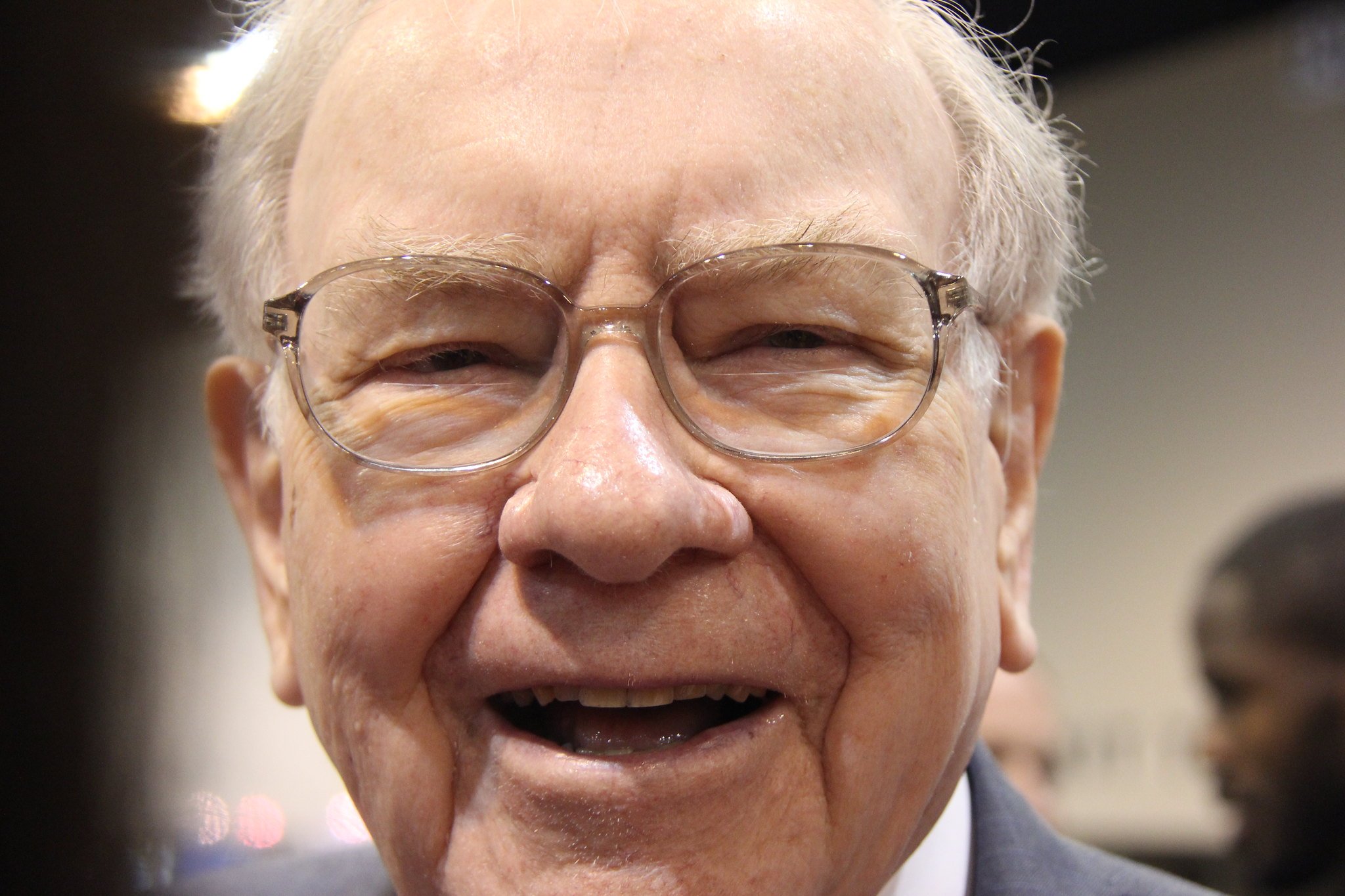On this episode of Industry Focus: Financials, Joe Magyer, the chief investment officer of Lakehouse Capital in Australia, joins Gaby Lapera to chat about leverage -- a frequently overlooked banking metric that is essential for diagnosing a bank's health. They also cover return on assets, a metric that should really be used with context but is frequently cited as a stand-alone figure. Afterwards, Mr. Magyer takes what we learned about metrics and applies it to Australian banks to give a comprehensive view of the banking industry in that country.
A full transcript follows the video.
This podcast was recorded on Sept. 15, 2016.
Gaby Lapera: Hello, everyone! Welcome to Industry Focus, the podcast that dives into a different sector of the stock market every day. You are listening to the Financials edition, taped today on Thursday, September 15th, 2016. However, you are listening to this on Monday, October 10th at the earliest. Who knows, this show might stand the test of time, so maybe you're listening to this in 2025, which I totally hope.
Joe Magyer: And it depends on what country you're in. If you're in Australia, this whole thing is just blown up.
Lapera: In case you're wondering who that sultry voice belongs to, it is Joe Magyer, the chief investment officer and a portfolio manager for Lakehouse Capital in Australia, which is somehow related to The Motley Fool, but legally I don't know exactly how, so we're going to skip over that.
Magyer: It's owned by The Motley Fool.
Lapera: OK, sounds good! How's it going, Joe?
Magyer: Going really well, I'm back at Fool HQ for the first time in two years. It's been way too long. It's great meeting people that I haven't met before, including you, and catching up with people like Chris, who I haven't spent nearly enough time with.
Lapera: Oh, hey, Chris Hill. He's waving at us. Just in case you're wondering how you ended up on this show, Chris Hill walked by my desk, and he did one of these classic, taking off my glasses, you know who you should talk to? You should talk to Joe, Uncle Joe. He likes banking metrics. That's what you sound like, Chris Hill.
Magyer: That's such a good Chris impression. He's shaking his head. That's pretty strong.
Lapera: So, now that I revealed the purpose of the show -- banking metrics -- I hear that you have a couple that you think investors should look at that potentially they don't really think about too much.
Magyer: Yeah. I'm a nerd in many facets. But around financials, I think people tend to gloss over some of the more important metrics with banks in particular. People get caught up in some of the finer points and metrics, like net interest margins. They get really excited about it, and they can sometimes miss big things, like the amount of leverage in a bank, the returns on equity and assets, and how those variables all move together. They're actually not complex. It's not rocket science. But most people just pass by it, and I think that's a missed opportunity on their part.
Lapera: Yeah, that's really sad. That's a little bit like missing the forest for the trees or missing the trees for the forest.
Magyer: Yeah, or the pine needles. A clean example is, people will look at returns on equity for a bank as being the best measure of how the bank is doing in terms of creating value for shareholders. That's basically rough cutting your net profit over your equity that you have at a bank. Generally speaking, that's a really good proxy for how much value a bank is creating and how much they're earning against equity. But, there's another variable there, which is leverage. I think a lot of people neglect this to their detriment. They don't appreciate the amplification and the importance. Basically, there are two levers here. There's return on assets, gross leverage, that leads to return on equity. Your gross leverage is the actual amount of assets relative to your equity. This is all in the balance sheet. You don't need to be a rockstar analyst or get any fancy designations to find this stuff. It's all right there. Total assets over equity. Doing that will allow you to find out how levered the overall business is. And when you multiply that by return on assets, that gives you return on equity, which is a very helpful way to understand the overall economics. But when you just unpack those two numbers, it gives you more of a sense of what is creating value. Is it operational excellence? Returns on assets? Or is it just straight up leverage?
Lapera: Let's take a quick break to talk about what leverage is, because I have discovered through angry emails, on occasion, to the show, that some people really want some very basic terms defined.
Magyer: Gotcha. Sure. Overall leverage, the math is total assets divided by total equity. In practical terms, talking about what the bank actually does, banks make very small amounts of money, pound-for-pound, for how much is actually in the business. They'll make, maybe, 1% on every dollar that they get in assets in the business. The way that they make that work is the lever up a lot. So, they'll take your deposits, and they'll lend it out to people and make loans. And they do that in a big way that will help them grow and make up for the overall narrow margins in the business. That's the leverage that's baked into the model.
Lapera: Right. And this can become a problem if it's used irresponsibly.
Magyer: Yes. Flashing back in time, the major investment banks in America had leverage above 30 times, back heading into what the Australians call the GFC, the global financial crisis. Here, we just call it the financial crisis, because we're Americans, and it's just our financial crisis. If you're not familiar with these numbers, you might be like, that doesn't mean anything to me. But imagine if you had a house. You borrow money to buy the house. How much you borrow against how much you put down is, essentially, your leverage. So, if you buy a house and you put down 10% equity, your levered 10:1.
The thing is, with a house, it's a pretty steady investment. (laughs) If I'd said that in 2006, that would have been pretty embarrassing. Over time, though, it's pretty steady. You are slowly putting more equity into it. That's a pretty low risk degree of leverage. But if you're doing the same thing with liquid assets and you're making loans that are illiquid, but you have liquid deposits and people can take money out of your bank, you can have a bank run, and that can come in different forms. Basically, the more levered you are, the more important it is that you are right and you don't make bad loans, and the more at risk you are that your capital goes out the door one day, and you'll just have to wave a white-flag there, like what happened with MF Global or Lehman Brothers. It happens. Not often, but it happens.
Lapera: Could you give an idea of how leveraged, on average, big banks in America are today?
Magyer: They used to be high, but it's gotten a lot lower. Wells Fargo's (WFC +0.10%) total assets to equity now is below 10. It was substantially higher than that before. They've always been more conservative, except when they're creating a couple million accounts for people who don't know about it, thousands of employees were doing that. In Australia, it's more like around 15, which is a good bit more aggressive. That's a combination of more friendly local regulation, but also confidence in demand. Wells Fargo has said this for a while -- there just isn't enough demand for loans for them to go out and lever up more. They would be happy to do it, but there hasn't been that demand. Another thing, regulators have been pushing back on banks and saying, "You need to lower your overall leverage..."
Lapera: U.S. regulators have been pushing on U.S. banks.
Magyer: Yes. People are still pretty stung about having to bail out the banks. With less leverage, you're much less likely to blow up. If you do, there will be much less of a needing hand. And overall, it lowers a bank's returns on equity, but it also lowers the systemic risk to the overall common. Specifically, the bank lowers their risk as well. There are pros and cons to it.
Lapera: As with everything in life.
Magyer: Indeed.
Lapera: I feel like we've covered leverage pretty well. Do you want to talk a little bit about return on assets?
Magyer: Yeah. Leverage can mask bad operations. Return on assets is how much you're going down in profit against your actual assets. That's more of a pound-for-pound version of how your back is doing. Historically, you'll see banks do something between 1%-1.5%. Before the GFC, you saw some banks, particularly Irish banks, had numbers that were just mind-blowing. I want to say they were above 2%, just from memory. I remember looking at them and thinking -- without accusing that anything was wrong, it just seemed unnatural. It was extremely unnatural, that turned out to be the case. What you usually see is, a strong bank will have cross-cycle returns. So, say, over a period of 10 years, an average return on assets of maybe 1.5. A bad bank will be south of one. Banks that are south of one will typically sell at lower multiples than the ones that are higher, because they're not as good of a business. Wells Fargo has historically been on the higher end of that. Citigroup has historically been on the lower end of that.
Lapera: One thing that our listeners might not realize because it's not the most intuitive thing is that a bank's assets are its loans out to people. It's a confusing thing, because for most people, a loan is not an asset. But it is for banks. Which is why, when you take leverage and assets all together, it gives you a more complete picture of a bank than just looking at return on equity would.
Magyer: And there are other things you can do if you want to double click a little bit and here. You can look at the makeup of, digging into the assets, what kind of loans are made. If they're business loans, that's going to be higher risk, traditionally, than residential mortgages.
Lapera: And even with residential mortgages, there's a bunch of different types. New York Community Bank specializes in multifamily residences, which is apartment buildings, basically, in New York City, which is a very safe real estate market, versus maybe someone who is selling single-family homes near an oil field in Texas.
Magyer: That's a great point. To flash an Australian example, the requirements have changed recently, but up until recently, a bank could make a loan on a residential mortgage. Historically, properties have done very well as an investment class in Australia. The bank would only hold as little as 3% of capital against that loan. So, they would be levered 33:1 on that mortgage. The logic is the same that U.S. banks had before they got their face crushed, which was, "Well, people always pay their mortgages, and there's collateral in the assets, so we're backed up there. There's mortgage insurance, so you don't have to worry about that. And just because one person's mortgage goes south, someone across the country, that doesn't mean that could happen to them." I think we all learned that that's not necessarily the case. Australian banks have not learned that lesson. They will, eventually. I don't know when.
Lapera: Let's actually talked about that. We were chatting a little bit before the show, and you said that Australian banks are really expensive. This is not a space that I'm normally in.
Magyer: You don't dabble in Australian banking?
Lapera: (laughs) I did once because I studied abroad at James Cook University in Northern Queensland in a town called Cairns. So, I needed to open an Australian bank account. But other than that, no, I have not actually interacted with Australian banks at all.
Magyer: Cool. So, up until recently, Australian banks where the most expensive banks in the world. They're still very expensive. Why are they so expensive? Well, default rates have been incredibly low in Australia. The country hasn't had a recession in 25 years. Just think about that. To an American, you're like, "What?! 25 years? That's crazy!" It's almost the longest streak ever. Australians have a lot of confidence as a result of this. Just imagine how different your life perspective would be if you had not seen a recession. You have professional investors who are in their early 40s who have not seen a recession. It's a very different worldview.
Lapera: That's so wild.
Magyer: Yeah. So, I think the banks tend to make loans with a little bit more of an optimistic view than American banks do, and investors tend to value them a little bit more optimistically. So, I'm actually rather bearish on the Australian banks. It's not because I'm expecting some cataclysmic event. But there are a few things. One, net interest margins are getting squeezed -- to get back to that thing I was saying you shouldn't pay too much attention to before. Default rates are near record lows. They won't stay that way. I don't know when exactly they'll pop, but they won't stay that way. The banks are also paying up around 75% of their income as dividends, which does not leave...
Lapera: 75%?
Magyer: Yeah. The yields are huge, and everybody loves that and gets excited about it. But that doesn't leave much room for error, when you're levered 15:1. All you need is a slight down-tip in your profit. When you magnify that, there won't be a lot of gravy left over for dividends.
Lapera: Yeah. If they're smart, they'll cut their dividend instead of trying to hold on. Is the real estate market substantially different than it is here? I realize, at the center of the country...
Magyer: No one is there.
Lapera: No one super duper lives there. Like some kangaroos. But is it a lot tighter as a result? Is housing super expensive? Is it D.C. levels or Iowa levels? Or is it somewhere in between?
Magyer: It's regional, but overall, it's very expensive. There was some work done by Jonathan Tepper and John Hempton in the past year, a couple of hedge fund managers. They went around and basically pretended to be interested in buying homes, and went to dozens of different banks to see what they could get lent. One bank was willing to lend them -- they were posing as a couple -- 10 times their income to buy a home. That's lofty. I personally don't think I could afford a mortgage that's 10 times my income, or buy a property that's 10 times my income. I just think, overall, it's not as extreme as the U.S. was in terms of loose lending standards, overall. No doc loans, or NINJA loans -- no income, no job -- those aren't really existing in Australia.
Still, prices are high, just like we saw with the dot-com bubble. Just because assets are freely traded, and there's nothing illegal going on doesn't mean an asset can't get overvalued. I think there's probably risk in the Australian property market today. If you're buying Australian property with a five- to 10-year residential viewpoint, it's not something I would stress about. But there's a lot of people -- something like one in seven Australians -- own an investment property. Which is a crazy concept in America. I certainly don't know one in seven people that own an investment property. And most of those are what's called negatively geared. That basically means they're losing money on a cash flow basis month to month in anticipation of getting it back in capital gains. (laughs) When I heard that, I was like, whoa! That's a pretty foreign concept to American property investment as well.
Lapera: I mean, the things you're describing, while they're not quite as bad as they were during the financial crisis, are things that were happening during the pre-financial crisis.
Magyer: Yes. I remember, back then, it seemed like a surprising number of my friends were budding real estate moguls. And I was like, "Actually, no ... " It just seemed odd, at the time. Anyway. Overall, I think property is expensive, and there's some risk there to be mindful of. If you're thinking about buying the banks, which are super levered to that and don't have much wiggle room with their payouts, and rich valuations. So, overall, I'm not predicting a crash, I'm just saying that I think the banks are basically priced as though everything will stay great. But there are many ways to lose. And I try to avoid situations like that.
Lapera: Fair enough. I think our listeners will have one question after hearing all that. Not that they're going to go out and buy Australian banks, but, is there a way for U.S. investors to buy Australian stocks?
Magyer: Yes. You can do it directly. You can also look at Australian funds. It should be clear that I'm not actively touting our fund, which doesn't even exist yet. I'm just saying, broadly speaking, you can look at active management. You can also look at ETFs. The trouble with ETFs in Australia, though, is that the market is super top-heavy. There's the big banks, a couple big retailers, and commodity companies. Something like 10 companies make up almost half of the index. There's another 2,000 that make up the other half.
Among those, you've got companies that don't look anything like the big players. There're a lot of small, fast-growing software companies that are deeply profitable, strong recurring revenue, great balance sheets. Those are the kinds of things I get into. So, you could look for active management, but to be honest, it's kind of difficult, straight up. You could go direct, but active management, you would want to find a fund that's based here in the U.S. so you could make the investment. It's hard to invest in funds that are based outside of America, because then you run into what's called PFIC rules. That's a long story short.
Lapera: Fair enough. We talked about index funds yesterday. When I say yesterday, I mean I taped it yesterday, so you would have listened to it on October 3rd.
Magyer: Time is a flat circle.
Lapera: So, our last show is the one we talked about index funds. I think we've covered everything that both of us wanted to cover, which is awesome. I did want to share this one fun fact about you, which is, according to your Fool.com profile page, you broke your high school's 400-meter track record.
Magyer: I did, yeah. That's starting to get a little long in the tooth and my profile, because it's been a while since I was in high school. But I did. I worked hard for that.
Lapera: Have you broken any other records recently?
Magyer: (laughs) Not recently.
Lapera: Fair enough. Austin, have you broken any records that we should know about?
Austin Morgan: Definitely not for running.
Lapera: (laughs) Fair enough. That was Austin, our awesome producer, just in case you were wondering. Thank you so much for joining us. This has been super interesting. You are more than welcome to come on the show whenever you want.
Magyer: Cool! I appreciate it. I'll take you up on that next time I'm back in the office.
Lapera: I was going to say, yeah, the time difference is kind of wild for you to Skype in.
Magyer: Yeah.
Lapera: But thank you again for joining us. I'll have to share some of my Australian stories with you at a later date so we don't bore our listeners with non-financial stuff. As usual, people on the program may have interests in the stocks they talk about, and The Motley Fool may have recommendations for or against, so don't buy or sell stocks based solely on what you hear. Contact us at [email protected] or by tweeting us @MFIndustryFocus. Do you have a Twitter that people can tweet you at?
Magyer: @Magyer.
Lapera: Yeah, I had to write it. Thanks again to Austin for producing today's show. I hope everyone has a great week!





